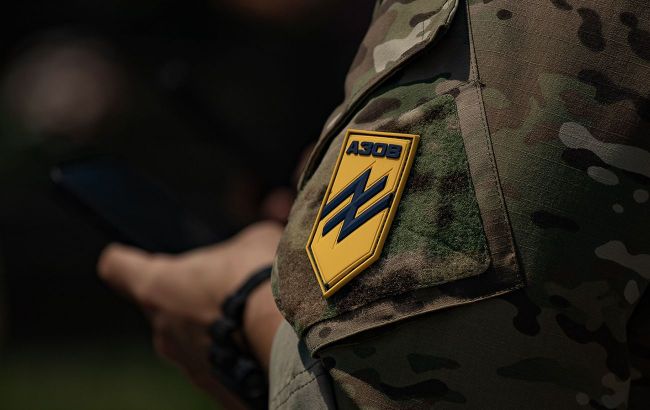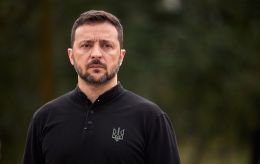US lifts ban on weapons supply to Ukrainian Azov brigade: Why it was taboo
 The Azov brigade can now use weapons from the USA (Photo: Getty Images)
The Azov brigade can now use weapons from the USA (Photo: Getty Images)
The United States has lifted the ban on the use of American weapons by the Ukrainian brigade Azov, which is part of the National Guard. The decision was made after verification by the State Department.
Read more about this and why American weapons were previously prohibited for Azov fighters in the RBC-Ukraine article below.
Contents
What is known about Azov
Azov was initially formed on May 5, 2014, in Berdyansk as a special patrol militia battalion of the Ministry of Internal Affairs (MIA) based on a decision of the Ministry of Internal Affairs of Ukraine.
Subsequently, in September 2014, by order of the head of the MIA, the battalion was reorganized and expanded into the Azov Special Police Regiment of the Ministry of Internal Affairs, and on November 11, the Minister of Internal Affairs signed an order to transfer the Azov Regiment to the National Guard of Ukraine with further equipping it to the combat standards of the National Guard of Ukraine (NGU).
Thus, the Azov unit became a separate special-purpose unit of the Azov Military Unit 3057 of the National Guard of Ukraine. In February 2023, the separate special purpose unit Azov became the 12th Special Purpose Brigade Azov of the NGU.
For many Ukrainians during the full-scale aggression of the Russian Federation, Azov is associated with the defense of Mariupol, which became one of the key events of the Russian-Ukrainian war. From February 24, 2022, to May 20, 2022, Azov defended Mariupol as part of the Mariupol garrison. During the 86 days of defending the city, 82 of which were in complete encirclement, Azov eliminated 3,500 enemy personnel and wounded another 5,000.
US weapons are no longer taboo for Azov
The Washington Post first reported that the United States lifted the ban on supplying its weaponry to the Azov brigade, citing the US State Department.
"Now the brigade will have access to the same US military assistance as any other unit. The policy change becomes evident as Kyiv enters the summer season of combat and faces the pressure from the Russian army, which has intensified its pressure on targets in eastern Ukraine and the country's energy infrastructure," journalists wrote.
It is noted that the Ukrainian 12th Special Purpose Brigade Azov underwent a thorough Leahy vetting conducted by the US State Department.
Background: This refers to the Leahy Law, which prohibits the provision of US military assistance to foreign units that have committed serious human rights violations. It is named after former Senator Patrick Leahy, who authored the law.
The US State Department, in turn, informed Azov after the vetting that they found "no evidence" of such violations. However, whether American weapons have reached the brigade was not specified.
Why there was a prohibition
About ten years ago, fighters of Azov were prohibited from using American weaponry because US officials believed that some of its founders adhered to racist, xenophobic, and ultranationalist views, and UN human rights defenders accused the group of violating humanitarian norms.
It is worth noting that in 2021, the Ukrainian government pledged not to allocate any assistance received from the United States under the Foreign Assistance Act of 1961 or the Arms Export Control Act or related laws. This includes a taboo on supplying weaponry to any unit of the Ukrainian security forces, for which the US government informed of the prohibition on receiving such assistance based on the Leahy Law. This prohibition was in effect until recently regarding Azov fighters.
Previously, the brigade commander, Denys Prokopenko ("Redis"), called for the repeal of amendments to US legislation that prohibit providing Western weaponry to his military unit. According to him, they were adopted based on the characteristics of Azov from Western media under the influence of Russian propaganda.
It should be added that the lifting of the ban has already been officially reacted to by the brigade's press service. They stated that receiving Western weaponry and training from the United States would not only increase the combat readiness of Azov but, most importantly, contribute to the preservation of the lives and health of the brigade personnel.
"This is a new chapter in the history of our unit. Azov becomes even more powerful, more professional, and more dangerous for the occupiers," the fighters concluded.
It is worth noting that it was previously possible to release defenders of Mariupol from Russian captivity, including among them the commander of Azov Denys Prokopenko and other unit fighters. Initially, it was expected that after the exchange, he and the commanders of the Mariupol garrison would stay in Turkey until the end of the war. But in July of last year, it became known that the Azovstal fighters were returning to Ukraine. Later, they returned to the front lines.
Sources: The Washington Post, the Telegram channel "Azov" and other open sources

